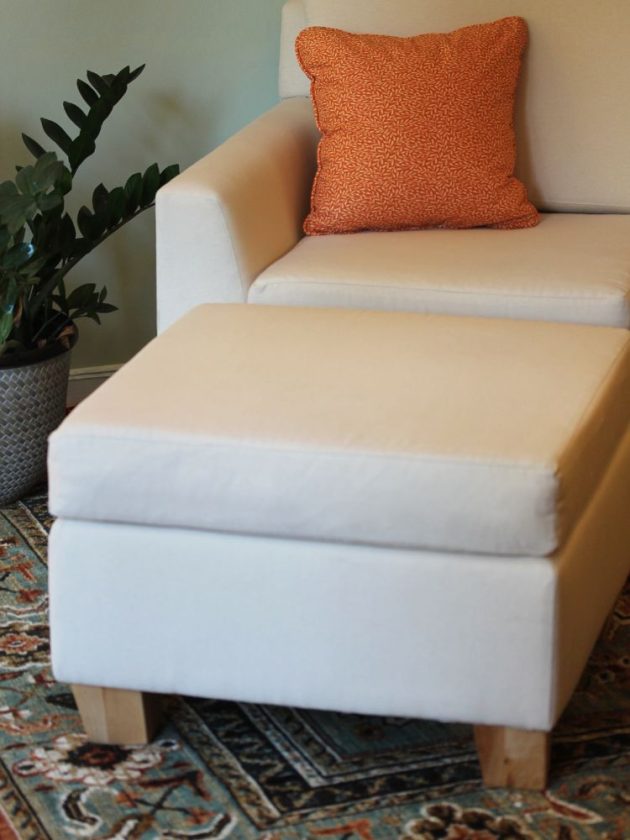Put your feet up and relax with the eco-friendly and non-toxic ottomans, benches, and poufs from these incredible sustainable furniture brands.
What Is A Sustainable Ottoman (or Bench)?
There are a lot of considerations that go into making sustainable furniture. Some brands may meet more of these criteria than others, and some criteria may be more or less important to you.
You might also engage with sustainability differently depending on your lifestyle, budget, aesthetic preferences, among other factors. But here’s a general idea of what to look for:
Look Secondhand
Used ottomans and benches are going to the most sustainable option since these furniture pieces have already been produced! Plus you’re preventing that furniture from heading to a landfill. You could browse an app like OfferUp or check your local Facebook Marketplace.
You can also check secondhand furniture sites like:
Shopping for new sustainably-made ottomans and benches? Check out the following tips:
Eco-Conscious & Durable Materials
With the rise of fast furniture, the quality (and the sustainability) of materials used in furniture has declined.
A sustainable ottoman (or sustainable bench) would be made durably so it lasts and would be constructed from responsibly sourced materials such as FSC-Certified and/or locally sustainably-harvested wood, recycled fabrics and organic natural fabrics for the upholstery, and non-toxic — ideally zero VOC — finishes. This guide has more non-toxic furniture brands.
Responsibly Made
Look into where the brand is producing their ottomans, benches, and/or poufs. Is it in their own workshop or a nearby production facility? Is it in a fair trade artisan workshop? A brand should have full transparency and traceability of their supply chain.
They also should ensure workers are earning living wages and work in safe environments. (One great way to check for this is to look at the materials and finishes used, making sure they’re non-toxic.)
Circular Practices
The EPA estimates that 12 million tons of furniture are thrown out annually. Yikes. A brand selling sustainable benches and ottomans would ideally consider the following:
- Quality construction so the furniture lasts a lifetime (or several)! If you’re moving a lot, it’s also worth considering how easy that piece of furniture is to move around and deconstruct/reconstruct if necessary.
- Repairability. Is that material repairable? Does that brand have replacement parts? Is it a material that could be refinished easily?
- Secondhand program or resellability. It would be incredible if the brand had a resale program for their furniture. Not many brands do, though. So you might also just think about if the style and quality of the piece would make it easy to sell again if you do think you might outgrow it.
Where to Find Sustainable Ottomans and Benches
Phew, that was a lot! But don’t worry: we’ve done the hard work of sifting through brands to curate the best options available right now. Check ’em out!
Note that this guide includes affiliate links, which means we may earn a small commission at no additional cost to you if you make a purchase which helps us continue to run this site. We only feature brands that meet strict standards for sustainability we love, and that we think you’ll love too.
1. Urban Natural
This sustainable furniture and home retailer has a beautiful selection of functional ottomans, cozy poufs, and elegant benches.
Among their selection are reclaimed teak benches from Ethnicraft and organic ottomans made with all-natural materials from Cisco Home (select “Inside Green”). You’ll likely be able to find whatever you’re looking for on Urban Natural, from an ottoman with storage to a swivel pouf.
Conscious Qualities: Eco-Minded Materials,
Price Range: $369 – $4897
Ships to: Contiguous US; contact for overseas shipping
2. Maiden Home
This woman-owned direct-to-consumer furniture brand has some seriously gorgeous sustainable ottomans. Maiden Home’s modern furniture is made in North Carolina using natural materials like solid ash wood and stonewashed linen. Many reviewers compliment the design, quality, and value of their ottomans and benches from the brand.
Conscious Qualities: High Quality, Handcrafted in US, Green Manufacturing Practices
Price Range: $500 – $1775
Ships to: Contiguous US States
2. Masaya & Co
Originally founded as a reforestation project, this sustainable furniture company is seriously committed to responsibly-made furniture, planting 100 trees with every order.
Masaya & Co has a wide range of ottomans and benches handcrafted by skilled artisans Nicaragua from solid sustainably-sourced hardwood. Most pieces are suitable for outdoor use as well.
Conscious Qualities: Responsibly-Sourced Wood, Reforestation Projects, Artisan Handmade to Order
Price Range: $260 – $1,100
Ships To: US States & Territories

4. Savvy Rest
Savvy Rest has a non-toxic ottoman made from solid maple hardwood, GOTS-certified organic cotton and/or hemp upholstery, and Cradle to Cradle GOLD-certified Talalay latex. The brand also has a sustainable bench crafted by skilled woodworkers in Charlottesville, Virginia from sustainably-sourced maple. All of their furniture is available unfinished or with zero-VOC finishes.
Conscious Qualities: Non-Toxic, Organic & Natural Materials, Built In Virginia
Price Range: $699-$999
Ships: Internationally (White Glove Delivery available for US + Canada only)
Use code CONSCIOUSSTYLE20 for 20% off!
5. The Citizenry
This fair trade artisan home goods store also has furniture, like their ethically made ottomans and benches. Each piece is handcrafted from natural materials like cotton, wicker, and solid wood in a fair trade process that’s guaranteed by the World Fair Trade Organization. You can learn more about the artisan workshop that made each ottoman or bench in the product details on The Citizenry’s site.
Conscious Qualities: Fair Trade, Artisan-Made, Natural Materials
Price Range: $295 – $650
Ships To: All US States + Canada
6. Medley
Medley has sustainable poufs, ottomans (including storage ottomans!), and benches handcrafted in California and Oregon to the highest quality standards. To back up their claims, they offer industry-leading warranties on their furniture. Their benches and ottomans are made from domestically-sourced FSC-certified Alder hardwood and eco-friendly fabrics (including GREENGUARD certified fabrics and natural fabrics like cotton and linen; check details on your fabric selection here).
Conscious Qualities: US-Made, Quality Warranty, Many Certified Eco Materials
Price Range: $376 – $1595
Ships: Internationally (contact them if your location is not an option when checking out)
7. Sabai
Sabai’s made-to-order sustainable seating and ottoman considers not only the production practices (like using recycled fabrics, FSC-certified wood, and CertiPUR-US certified foam) but also its use and end-of-life. The company offers replacement parts and has a buy back & resale program.
Conscious Qualities: Recycled & Natural Materials, Secondhand & Repair Program
Price Range: $395
Ships To: All US States + Canada
8. VivaTerra
Green lifestyle retailer VivaTerra has options for every part of your space: they carry poufs, indoor/outdoor benches, garden stools & garden benches, storage benches, and accent stools. You’ll find benches and stools made from reclaimed wood, acacia wood and teak, among many other natural and repurposed materials.
Conscious Qualities: Eco-Conscious Materials, Artisan-Made
Price Range: $159 – $1600
Ships To: US States & Territories
9. Natural Home
Natural Home by Futon Shop has non-toxic ottomans made from 100% natural materials. Their NBJ modular ottomans are crafted with natural Dunlop latex, coconut coir base, and wool upholstery. They also have a vegan ottoman made with potato-based PLA fiber. And if you want to go the extra mile, you can upgrade to organic latex fill for your custom ottoman.
Conscious Qualities: Non-Toxic, Natural & Organic Materials, Woman-Founded, Gives Back
Price Range: $630+
Ships To: Contiguous US States
10. Loll Designs
Loll Designs creates outdoor furniture (including an outdoor ottoman) from partially recycled high-density polyethylene (HDPE) — mostly from milk jugs – and the upholstery is made from Sunbrella acrylic, a long-lasting performance fabric. All of Loll’s materials are purchased within the US and the furniture is produced in Duluth, Minnesota.
Conscious Qualities: Recycled Materials, Made in the US
Price: $895
Ships: US & Internationally through Made Trade
11. Emeco
Handcrafted in Pennsylvania from recycled aluminum and responsibly-harvested Accoya wood, Emeco’s eco-friendly benches are built to last. In fact, every product passes commercial grade standards — so you know it’s durable. Emeco’s benches are also Cradle to Cradle Gold certified and are free of VOCs.
Conscious Qualities: Recycled & Sustainably Sourced Materials, Durable, Made in the US
Price Range: $1,610 – $1,675
Ships to: US & Internationally through Made Trade
More Sustainable Furniture Guides:
Sustainable & Non-Toxic Sofas To Relax In
Eco-Friendly Chairs To Take A Sustainable Seat In
Gorgeous Sustainable Tables To Gather Around
The post 11 Best Sustainable Ottomans, Poufs, and Benches appeared first on Conscious Life & Style.
Green Living
How Toad&Co’s Clothes Help Everyone Enjoy the Outdoors
This is a sponsored article about a brand that was independently assessed by our rigorous ratings system. We’re proud to only collaborate with “Good” and “Great” rated brands. Learn more.
US brand Toad&Co has a socially and environmentally responsible approach to clothing, creating pieces inspired by the outdoors and with a lower impact on the environment. Not to mention an enduring commitment to helping everyone get outdoors through its work with non-profits. Read on to discover the brand’s environment-first ethos.
Focusing on what matters most
“We make feel-good clothes for positive impact—fostering community around doing good, enjoying life’s simple pleasures, and embracing the unexpected,” says Sarah Palladino, director of people and impact at Toad&Co as she introduces the Californian brand. This “simple pleasures” concept applies to Toad&Co’s approach to design, too, and prioritises quality and responsibility over trend-led items. This, in turn, means the brand focuses its energy on clothes that are comfy and practical enough for everything from work to outdoor exploring, and on maintaining its ongoing commitments to using lower-impact materials, partnering with cleaner factories, and looking for new ways to do more with less.
Since day one, it’s been about more than just clothes. From choosing sustainable practices in every corner of our business to supporting programs that protect the planet and make the outdoors more accessible to everyone—knowing we stand for more is what keeps us going
Gordon Seabury – CEO at Toad&Co
Lower-impact materials and producer responsibility
Opting for lower impact materials is one of the core ways brands can address their impact on the planet: “Sustainable materials make a world of difference,” Toad&Co says. “We use organic cotton, recycled fibres, and other high-quality materials known for low-impact growing and cleaner manufacturing.”
The brand’s selection of more sustainable materials includes organic cotton, hemp, TENCEL Lyocell, and recycled fabrics like wool, cotton, and polyester. It also looks to third party clothing certifications like bluesign®, OEKO-TEX® STANDARD 100, and Global Organic Textile Standard, and it publishes its list of restricted substances for all to see.
Toad&Co also operates a resale platform, called ToadAgain, online and at its IRL store in Maine, US, to keep its clothes in the loop.
Supporting non-profits and access to the outdoors
Toad&Co donates 1% of its profits to organisations working to empower others and, in particular, enable better access to the outdoors for all.
In 1996, Toad&Co partnered with Search, Inc. to co-found the Planet Access Company, a full-functioning warehouse that trained and employed up to 70 adults with disabilities annually.
Determined not to stop at the front door, the brand also co-founded Search for Adventure in 2004, a unique travel program to facilitate vacations for adults with disabilities. Over 20 years later, the social venture partnership has evolved—and includes a flagship store in Chicago, a program called Visibility Arts that nurtures creativity through sharing Search, Inc. artist’s work, neurodiversity and disability awareness training, and an expanded Search for Adventure program. In 2024, the brand supported 147 nights of camping for adults with disabilities through the program.
We give back to—and partner with—organisations that align with our three pillars of giving: conservation for human enjoyment, equity and accessibility, and do the right thing
Sarah Palladino – director of people and impact at Toad&Co
One of Toad&Co’s key partnerships is with Brave Trails, which is dedicated to LGBTQ+ youth leadership, to support it in putting on accredited camps, mentorship programs, and meet-ups for LGBTQ+ youth.
Shop favourites from Toad&Co’s new collection
Read on to discover some of the standout items that balance style with practicality from Toad&Co’s lineup.
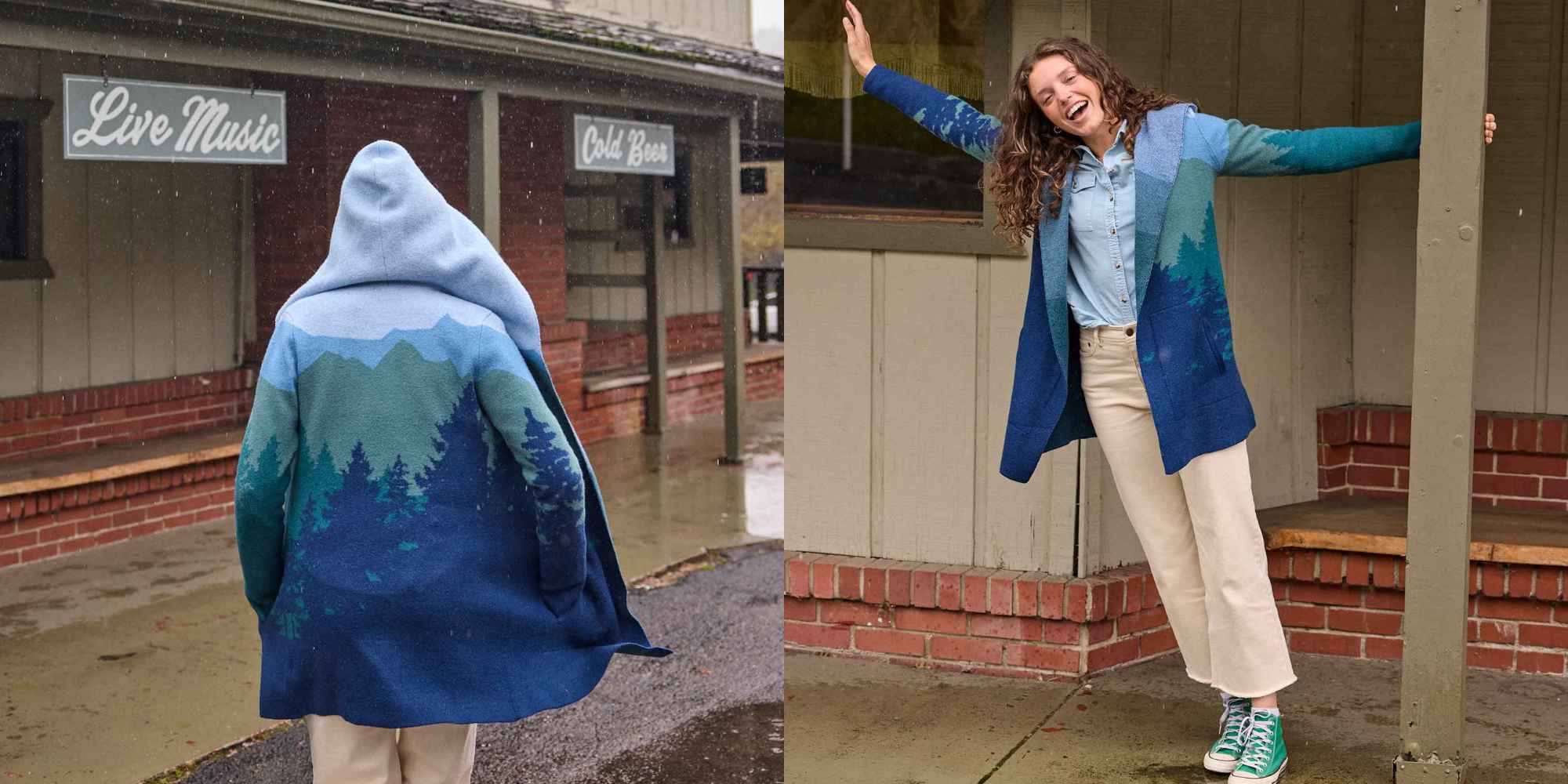
Woven with a beautiful alpine jacquard pattern, this hoodie is made from non-mulesed Merino wool and features pockets at the sides. It’s ideal as a mid-layer under a longer coat when you’re out exploring, or as a cosy item for grabbing a post-walk hot chocolate.
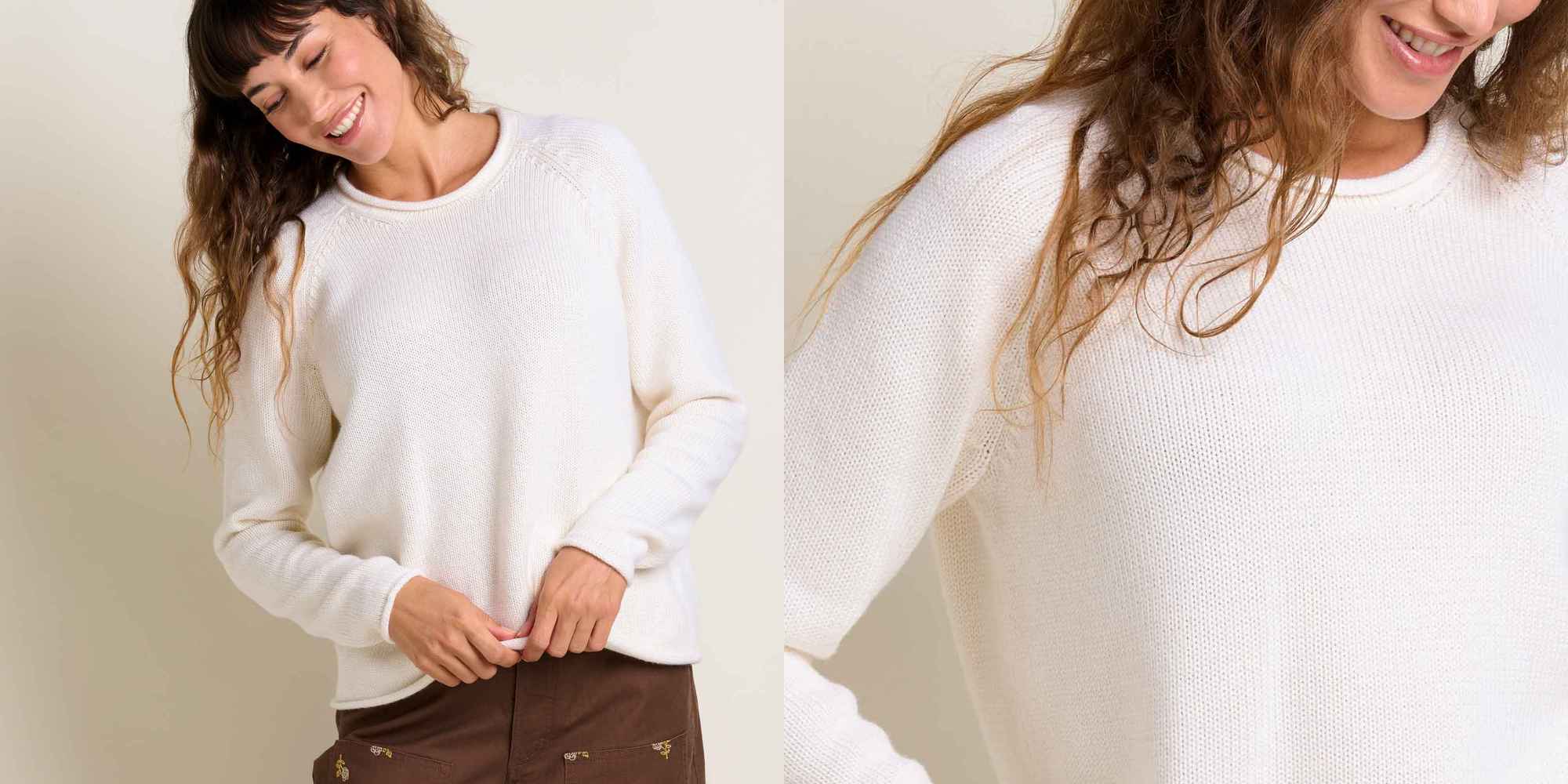
This Alpineglo sweater is a blend of 50% organic cotton and 50% non-mulesed Merino wool, so it’s going to help regulate your temperature in most climates. On top of that, the neutral tone and straight fit make it really versatile—you’ll be reaching for it on the regular.
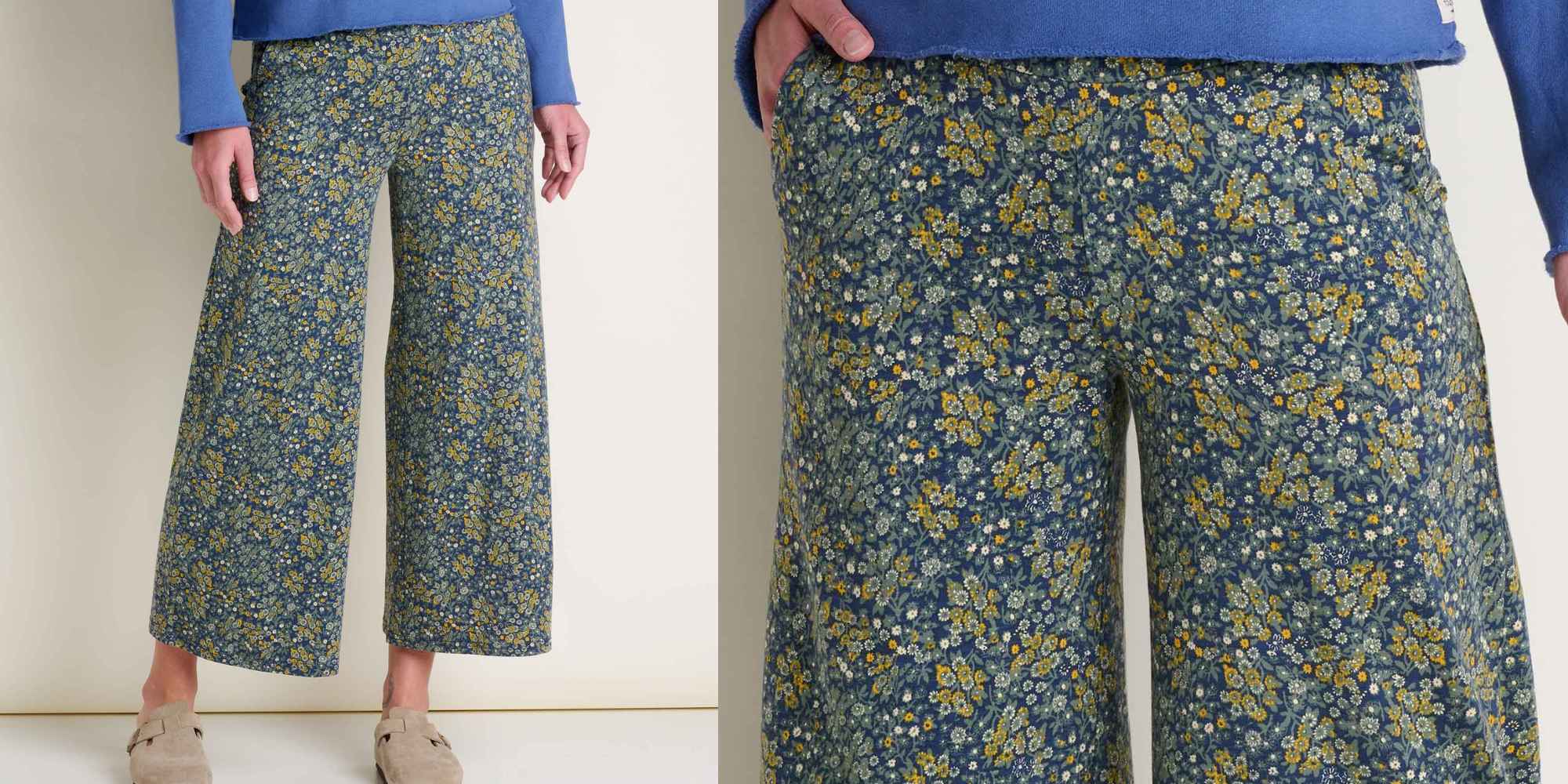
Toad&Co calls these cropped trousers “sweatpant comfortable, going-out presentable”, which makes sense, given they’re made with organic cotton and Tencel Lyocell for softness and have a comfortable wide waistband, not to mention a pretty floral pattern.
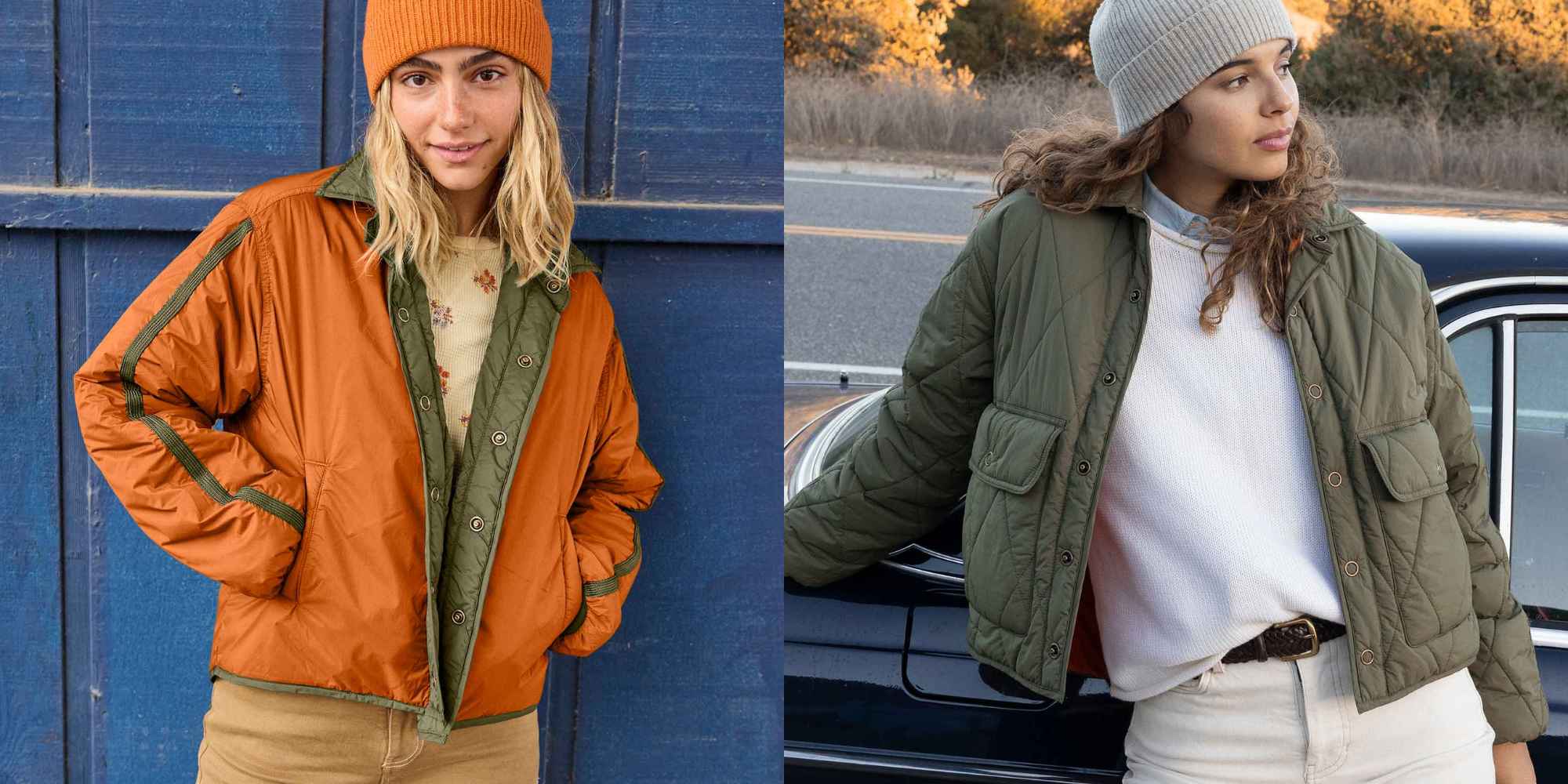
This Nomader jacket is reversible, packable, and water-resistant. In other words, it’s the ideal item to take with you for outdoor adventures. It’s made from recycled nylon and lightly quilted for warmth.
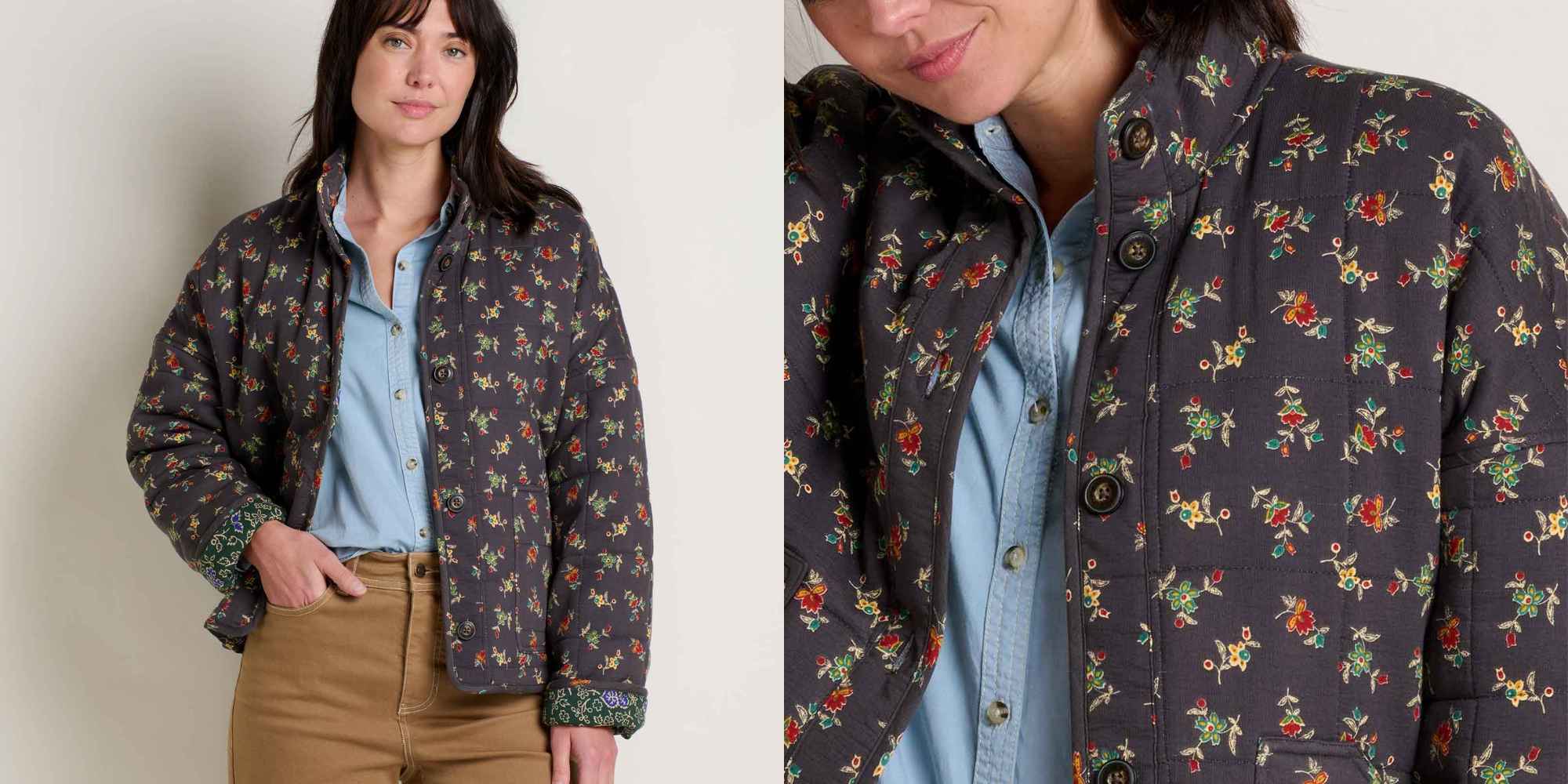
Toad&Co picked the crepe-like organic cotton for this jacket so that you could fold it away in a bag and have it still look presentable when you pull it out. It’s also packed with recycled polyester padding for extra warmth.
 Balsam Cutoff TrousersThese Balsam Trousers are made with a tiny bit of stretch and a special waistband for comfort, so they’ll flex with you and feel good all the time. The neutral brown colour also goes with so many options.
Balsam Cutoff TrousersThese Balsam Trousers are made with a tiny bit of stretch and a special waistband for comfort, so they’ll flex with you and feel good all the time. The neutral brown colour also goes with so many options.These Balsam Trousers are made with a tiny bit of stretch and a special waistband for comfort, so they’ll flex with you and feel good all the time. The neutral brown colour also goes with so many options.
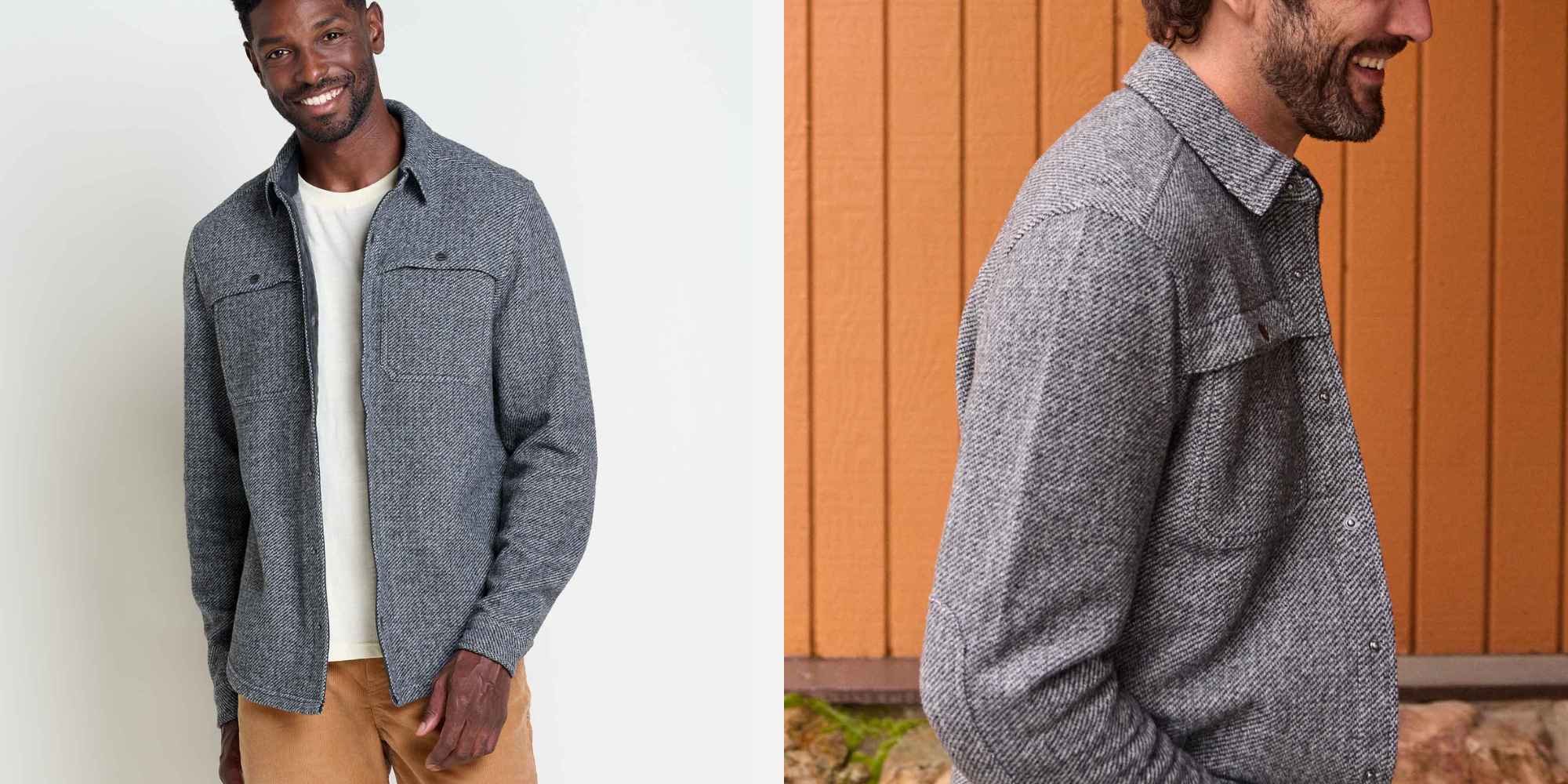
Going from a walk to dinner? From the office to drinks? This Kennicott shirt jacket fits the bill for all of the above. The smart twill fabric incorporates recycled Italian wool.

This is Toad&Co’s Re-Form Herringbone: a blend of recycled cotton and polyester that offers a soft drape and an attractive herringbone weave that looks smarter than the average checked shirt.
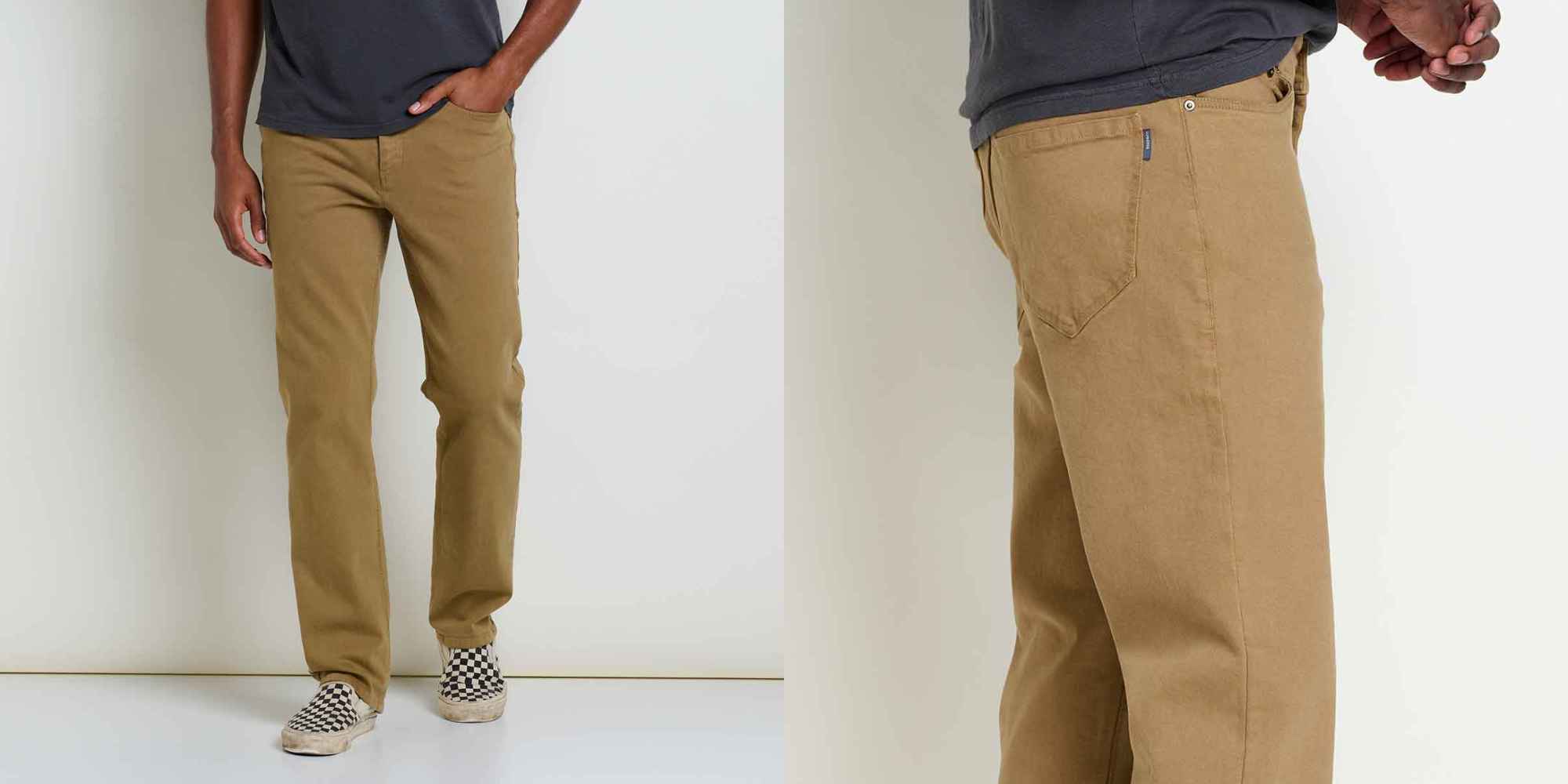
Like the women’s equivalent, these Balsam trousers have a touch of stretch and a comfortable ‘FlexForm’ waistband that mean they’re going to feel comfortable from the get-go—and you won’t need to worry about a belt, either.
Discover more of Toad&Co’s clothes.
The post How Toad&Co’s Clothes Help Everyone Enjoy the Outdoors appeared first on Good On You.
Green Living
50 DIY Christmas Presents Anyone Can Make
Last Updated on November 21, 2025
If you’re on the handmade Christmas kick this year, you’re not alone. So am I!
I’m choosing presence over presents this year and bringing back the 90s Christmas I loved as a kid – simple, crafty, low pressure, and full of small moments that feel meaningful.

If you want to gift thoughtfully, and without breaking the bank, these DIY Christmas presents are for you. There’s something for everyone on this list – whether you prefer easy or complex DIYs.
I’ve included all kinds of DIYs – beauty, cooking, fashion, and practical gifts alike. Best of all? Many of these tutorials are zero waste (or close to it).
what are good homemade Christmas gifts?
Good homemade Christmas gifts include consumable items, like homemade nut butters, vanilla extract, or jams. But not all homemade gifts are edible – you can also make items like bath bombs, candles, body scrubs, beeswax wraps, and so much more.
If you’re extra crafty, you could even make wooden gifts (like shelving or tablet holders), ceramic items (like mugs or jewelry), or knitted/crocheted pieces (like blankets, scarves or hats).
It all depends on your level of skill, time at your disposal, and ingredients/materials you have access to.

what are good inexpensive Christmas gifts?
Some good inexpensive Christmas gifts are DIY cornstarch ornaments, handmade body or lip scrub, seasoned salt blends, and homemade treats (like these chocolate chip cookies or vegan sugar cookies).
And never forget to hit up your local thrift store – you can find so many great items that would make affordable gift baskets!
Wrapping DIY Christmas gifts also doesn’t have to be expensive. Reusing gift bags and ribbons from last year, upcycling packaging paper, or even repurposing a scarf for furoshiki wrap are all low-waste and affordable!
RELATED: Gift Wrapping: How to Keep It Easy, Eco and Chic
how can I make a last minute gift?
You can make a last minute gift by getting crafty using the materials you have on hand!
For example, if you have a cardboard box, why not try making an upcycled cardboard dollhouse, vehicle, or pirate ship for a child? For adults, a DIY storage container or a shoe rack works.
One of my fav last minute gifts is scented bath salts in an upcycled glass jar – just a little Epsom salt and essential oil blends will do the trick!
Here’s my list of DIY Christmas gifts – something for everyone and every skill level.

- Bath salts
- DIY makeup like mascara/eyeliner, or lip to cheek
- Bath bombs
- Lip scrub
- Lip balm
- Face mask
- Body lotion
- Natural perfume
- Dry shampoo
- Shampoo bar
- Body soap
- Deodorant
- Rose water toner
- Hand-poured coconut/soy/beeswax candles
- Simmer pot in a jar
- Cookie, brownie, soup mix or hot cocoa mix in a jar
- Handmade seasoning blends
- Vanilla extract
- Vegan caramels or plant-based butter wrapped in compostable parchment paper
- Herb or citrus infused olive oil
- Peanut butter + jam
- Beeswax wraps
- Apple or pumpkin butter
- Sourdough or no-knead artisan bread
- Finished embroidery hoops
- Embroidered pillows, tote bags, clothes or cloth napkins
- Sewn cotton rounds
- Knitted scarf, hat, gloves, sweater, or blanket
- Hand warmers
- Quilt blanet, quilted coat or quilted wallet
- Tie dyed secondhand silk scarves, clothing or sheets
- Hand painted or drawn artwork
- Air dry clay paint palette
- DIY wooden frame for paintings or print photos
- Handmade ceramics (mugs, chawan, chasen holder, vase, spoon rest, etc.)
- Woodworked items (birdhouse, shelving, bookcase, wall guitar mount)
- Carving wooden bowls by hand
- Natural branch coasters
- Plant propagations in one of these DIY planters
- Seed balls using native seeds
- Handwoven baskets or bowls
- Macrame produce bag
- Macrame plant hanger
- Fabric paper mache bowls
- Upcycled paper earring jewelry
- Clay earrings
- Handmade plush toys
- Felt ‘food’ toys
- Wooden toys (like vehicles, blocks, or dollhouses)
- Knit or crocheted baby clothes
What do you think of these DIY Christmas presents? Let me know in the comments!
The post 50 DIY Christmas Presents Anyone Can Make appeared first on Going Zero Waste.
Green Living
8 Best Non Toxic Rugs For a Sustainable Home
Last Updated on November 6, 2025
Did you know most rugs are made from polyester, aka plastic? Arguably, a good chunk of our furniture and home decor is nowadays.
And lets not forget – rugs can get a lot of foot traffic. If it’s made from polyester, chances are those plastic fibers are going to shed and get onto us. Or worse, in us.

Some of the links in this post are affiliate links; for more information please see my disclosure policy.
Microplastics have been found in human feces, blood, and even placentas. And according to a study from Stanford University, those who had microplastics in their plaque had a higher risk of heart attack, stroke and death than those who didn’t.
On top of this, 5 billion pounds of rugs go to waste each year – that’s 2% of total US landfill. And if they’re made from plastic? They won’t biodegrade.
It’s more important than ever to reduce our exposure to microfibers where we can. Which is why I’ve rounded up the best non toxic rugs on the market.
what is the least toxic rug?
The least toxic rug will have sustainable materials and use no harsh chemicals (like PFAs) in their production.
Here’s what to look for when purchasing a non-toxic rug:
- Sustainable materials, such as organic cotton, jute, sisal or wool
- Low-waste packaging + delivery
- Natural, non-synthetic dyes
- Third-party certifications like OEKO-TEK, Fair Trade, GOTs
- Easy to spot-clean or machine wash
- Available in various styles, patterns + colors to suit your needs
do all rugs have PFAS?
According to Department of Toxic Substances Control (DTSC), only four samples of 201 carpets and rugs were found to contain more than 100 parts per million in their fibers, indicating PFAS were intentionally added to the products.
However, while PFAs may not be a huge concern for rugs, microplastic pollution is, specifically if your carpet is synthetic. Your best bet is to check the material your rug is made from and choose natural fibers whenever possible.
what is the best non-toxic rug for nursery?
The best non-toxic rug for a nursery would be made from natural materials like wool and organic cotton (which are soft on baby’s skin).
I recommend also checking for natural latex for the rug backing and underlay pads. Brands on this list that offer kid-friendly sizes and patterns include Lorena Canals, Nestig, Quince, and Loomy (more on each below).
what brand of rugs are non-toxic?
The brands of rugs that are non-toxic are listed below. I’ve gone ahead and highlighted some of my favorite features of each brand, but it isn’t an exhaustive list. Be sure to check out their websites for more information.

1. hook and loom
- Various rug sizes, shapes + patterns
- Made from GOTs certified organic cotton, recycled cotton + wool
- No dyes or harmful chemicals
- No latex
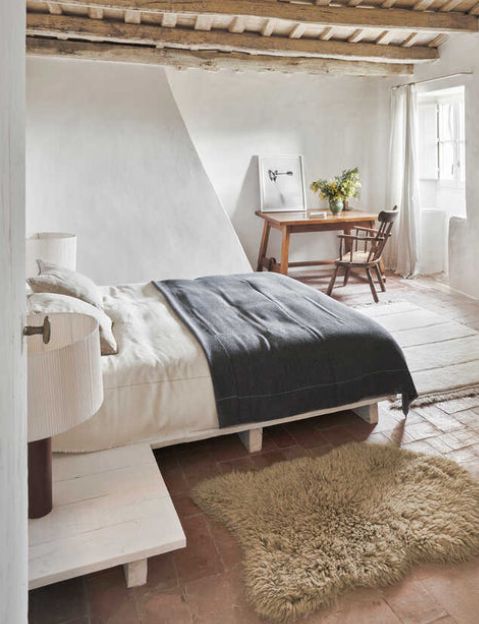
2. lorena canals
- Various rug sizes, shapes + patterns
- Handmade by artisans using recycled materials like organic cotton + wool
- Nontoxic dyes
- Make your own option
- Machine washable
- Rugcycled line made from recycled materials in their own factory
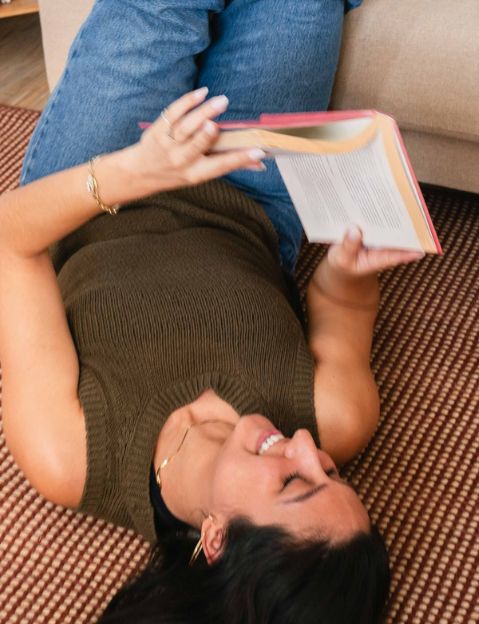
3. sabai
- Field rug
- Woven using wool + jute
- Available in 3 varying sizes
- Rug pad add-on available for reduced movement
- Certified B Corporation

4. quince
- Various sizes + patterns, best known for vintage-inspired looks
- Made from natural materials like wool, jute, + cotton
- Handcrafted by artisans in India
- Transparent pricing practices
- Compostable poly bags + recycled plastic mailers

5. west elm
- Rugs for every area of the home, in varying sizes
- Made from wool, jute, hemp, cotton, TENCEL + recycled materials
- Handspun by skilled artisans in India
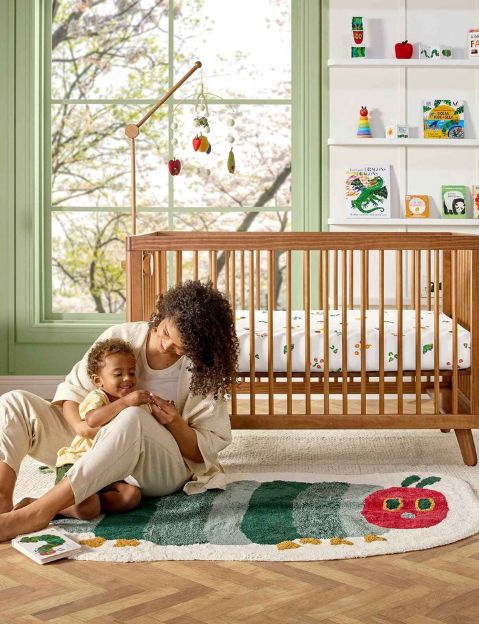
6. nestig
- Area + washable rugs made with fun shapes/designs for babies + kids
- Washable rugs made with organic cotton + nontoxic dyes
- Area rugs made with cotton + each colored element crafted from recycled cotton
- Handmade in Brazil

7. cold picnic
- Various rug shapes + sizes, abstract patterns + bold colors
- Made with wool, bamboo silk, cotton, hemp, + deadstock materials
- Designed in a Brooklyn studio, handmade by artisans in India
- Committed to reducing packaging waste where possible
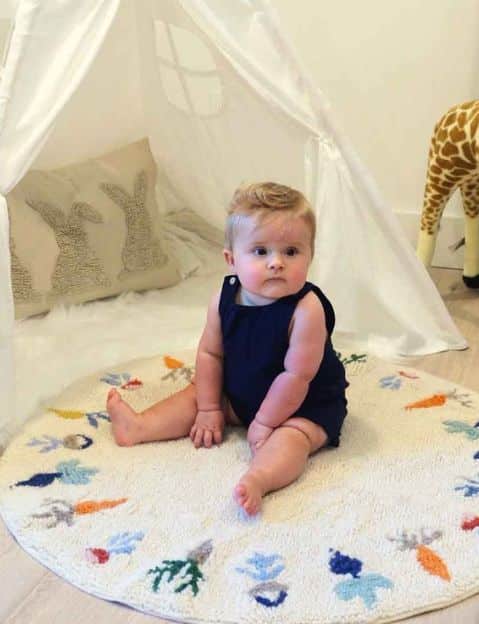
8. loomy
- Various rug sizes, shapes + patterns
- Made from banana silk, hemp, jute, recycled fiber, viscose, or wool
- Any colored yarn dyed using low-impact techniques
- Handcrafted by indigenous artisans
So what do you think of these non toxic, sustainable rugs? Let me know in the comments!
The post 8 Best Non Toxic Rugs For a Sustainable Home appeared first on Going Zero Waste.
-
Climate Change4 months ago
Guest post: Why China is still building new coal – and when it might stop
-
Greenhouse Gases4 months ago
Guest post: Why China is still building new coal – and when it might stop
-
Climate Change2 years ago
Spanish-language misinformation on renewable energy spreads online, report shows
-

 Greenhouse Gases2 years ago
Greenhouse Gases2 years ago嘉宾来稿:满足中国增长的用电需求 光伏加储能“比新建煤电更实惠”
-
Climate Change Videos2 years ago
The toxic gas flares fuelling Nigeria’s climate change – BBC News
-

 Climate Change2 years ago
Climate Change2 years ago嘉宾来稿:满足中国增长的用电需求 光伏加储能“比新建煤电更实惠”
-

 Carbon Footprint2 years ago
Carbon Footprint2 years agoUS SEC’s Climate Disclosure Rules Spur Renewed Interest in Carbon Credits
-
Climate Change2 years ago
Why airlines are perfect targets for anti-greenwashing legal action



